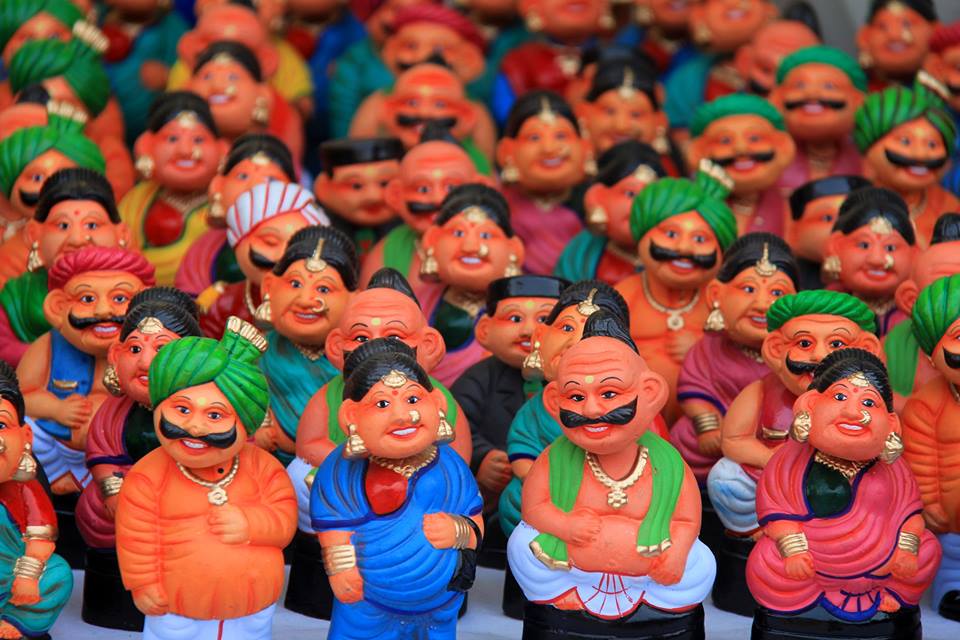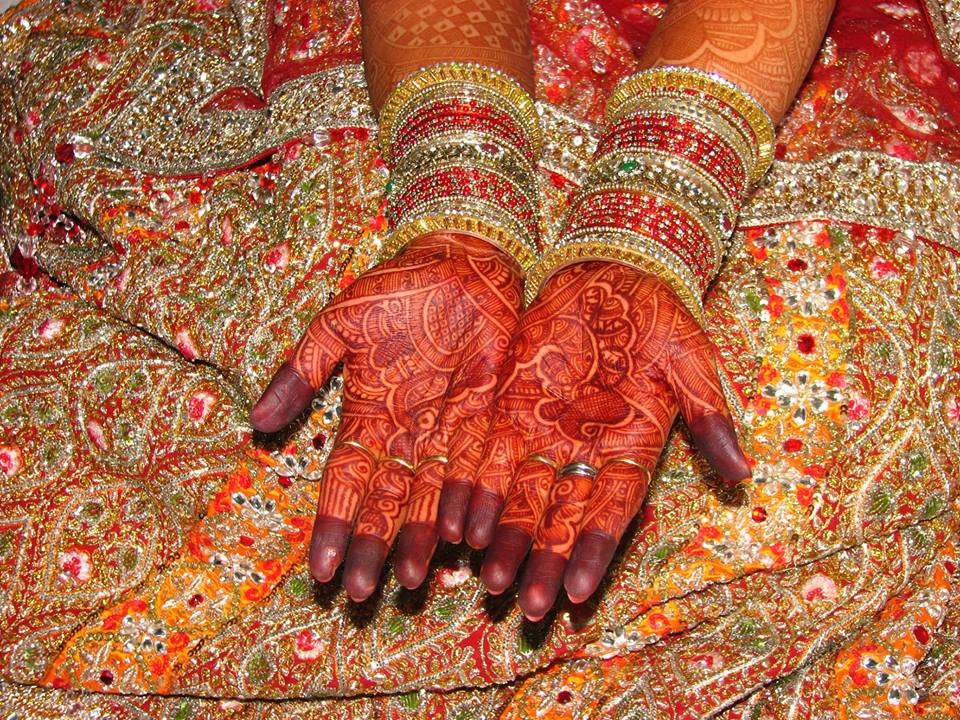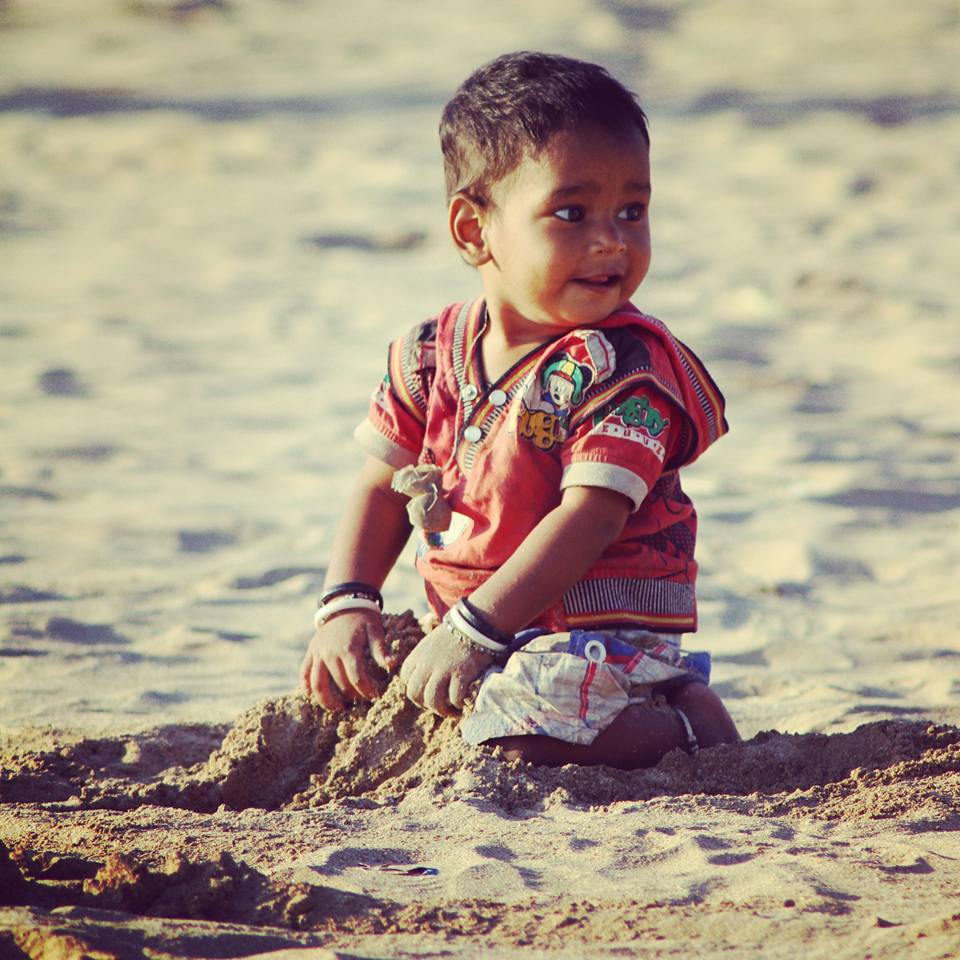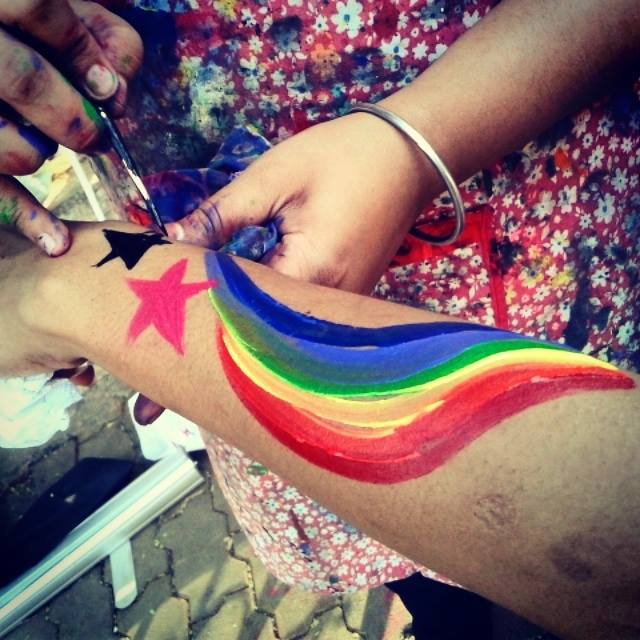On February 8 the Law and Justice Standing Committee of the National Assembly of Pakistan unanimously approved and adopted the ‘Hindu Marriage Bill 2016’. On February 15, the Assembly of Sindh province, home to over 90% of the country’s 3 million Hindus, passed it into law. For the first time since India’s partition and their subsequent minority status in the new Muslim homeland 70 years ago, Pakistani Hindus will be able to register their marriages as husband and wife. If passed by the National Senate, this law will be applicable throughout the country as well.
This protracted struggle by the Hindu religious minority has similarities and differences with the Indian LGBTIQ sexuality and gender minorities’ ongoing fight for equal recognition of their relationships. It may be argued that the struggle for legalization of same-sex relations has not even begun, given that the beleaguered community is still in the primary stage of erasing the blight that many post-colonial countries in the British Commonwealth face – that of the anti-sodomy law, or the notorious Section 377 of the Indian Penal Code, which effectively criminalizes all non-penile-vaginal sex but is selectively enforced to oppress gender and sexuality non-normative populations. While the Indian Parliament passed the Hindu Marriage Act in 1955, making it mandatory to register Hindu marriages in this country with an approximately 79% (1 billion, 24 million) Hindu-majority population in 2016, a “Gay Marriage bill” seems light years away in India, as it does in Pakistan. Nevertheless, a closer scrutiny of these two struggles for recognition of their relationships – of religious minority Hindus in the Islamic Republic of Pakistan and of the disparagingly labelled ‘miniscule’ minority queers (and their ‘so-called rights’) in avowedly, seemingly-unflinchingly patriarchal and heterosexist India, provides an insight into how ubiquitous, quotidian and often unacknowledged social and political discrimination is exacerbated by legal lacunae, but also of how these communities have overcome these barriers by increasingly appealing to the inherent, hitherto latent sense of solidarity and empathy among majority populations to achieve real and tangible progress in their efforts to win fundamental rights. Here are some such aspects:
Path To Equal Citizenship
Efforts to enact a Pakistan Hindu Marriage Act have been made since at least the 1970s, but never bore fruit. The loss of East Pakistan to the new nation of Bangladesh in 1971 also meant a further precipitous drop in their population, making them an even feebler voice in the hurly-burly of politics governed by electoral gain. In July 2007, a 45-year old married mother of four, Parmeshwari Devi was refused a Computerised National Identity card (CNIC) at the National Database and Regulatory Authority (NADRA) office of Rahim Yaar Khan district, because she didn’t have a nikahnama or Form B. It took a tedious 2.5 year legal battle in the Supreme Court for her to win her national identity card. The silver lining was the SC directive for a policy amendment enabling and requiring district administrations to accept Panchayati (community organization-provided) affidavits . This momentum did not slacken after an abortive attempt at introducing such a bill in 2008, and Pakistani Hindus, with the help of NGOs started anew a campaign for marriage registration in 2009. Meanwhile, after the 18th Constitutional Amendment of April 8, 2010, family matters of religious minorities became provincial subjects in Pakistan. After 2 more Parliamentary failures (in 2011 and 2012), senators Ramesh Lal of the Pakistan People’s Party and Dr. Darshan of the Pakistan Muslim League (Nawaz) jointly moved a private members bill in 2014. Subsequently a Government Bill was introduced by Law Minister Pervaiz Rashid in 2015.
While these events played out in Pakistan, in India, the AIDS Bhedbhav Virodhi Andolan (organization against discrimination related to HIV/AIDS) intensified the campaign to repeal Section 377 in 1994 after Delhi’s IG (Prisons) Kiran Bedi denied access to condoms to male inmates of the country’s largest jail Tihar, in New Delhi. Subsequently in 2001, Naz Foundation (India) Trust filed a public interest litigation in the Delhi High Court to legalize homosexual intercourse between consenting adults. But the Delhi High Court declined to hear the petition citing that the petitioners had no locus standi in the matter. On appeal, the Supreme Court decided that Naz Foundation indeed had the standing to file a PIL in this case and sent the case back to the Delhi High Court to reconsider it on merit. Eventually, in a historic 105-page judgement delivered on July 2, 2009, Delhi High Court overturned the 150-year-old section. However, on 11 December 2013, the SC ruled homosexuality to be a criminal offence, setting aside the 2009 judgement and effectively re-criminalizing the Indian LGBTIQ community (and thereby, 17.8% of the world’s LGBTIQ community), after it had enjoyed 4.5 years of decriminalization.
Observing the trajectories taken by these two struggles thus far reveal some interesting contextual insights: unlike with LGBTIQ persons in India, there never was any criminalization for being Hindu or practising Hinduism in Pakistan, and the sacredness and the primacy of the institution of marriage was never in doubt. Registering Hindu marriages was never a threat to hetero-patriarchy, on which the edifice of religious moral control is based. The ‘othering’ of the Hindu has some roots in the bloody history of Partition and the seemingly irreconcilable nature of polytheism and monotheism, among many, many other things. This ‘othering’ has been courageously countered by progressives in Pakistan, who locate the inalienable rights of Pakistani Hindus in the kernel of a passionately-espoused idea of Pakistan – that of a safe haven for minorities to live full, vibrant lives free from discrimination.
However the very idea of homosexuality is considered threatening to this foundation of a ‘moral’ society. It is deemed unnatural and “against the order of nature” according to the carnally-blinkered Victorian-era Section 377 of the Indian Penal Code. Hence the recognition of same-sex relationships in India will have to first overcome this gigantic hurdle before it can move to the next step – the marriage equality movement in the United States lost 17 years due to the defeat in trying to repeal the very same sodomy laws in Bowers vs Hardwick (1986) till the victory in Lawrence vs Texas (2003) paved the way for marriage equality, another 12 years later, in 2015. India’s Special Marriages Act 1954 is argued to provide a robust framework to potentially recognize same-sex relationships as it provides a special form of marriage, registration and divorce, irrespective of religion or caste. However, the setback in the Supreme Court of India in 2013 made activists fear that a similar delay in decriminalization would push the struggle for relationship equality back by a generation in India – thankfully, the directive of the Supreme Court on February 2, 2016 that the Curative Petition against Section 377 be heard by a 5-judge Constitutional Bench has allowed the community a glimmer of hope that they would not have to go back to square one and fight this battle with a fresh case all over again. The ‘othering’ of the gay, lesbian, bisexual, transgender, intersex or queer person in India is also based on social and religious morality. Which is precisely why, the eloquent espousal of Constitutional morality by Justice A.P.Shah’s landmark judgment in the Delhi High Court in 2009, meaning that even the tiniest minority of citizenry must have its fundamental rights protected – an effective counter against the sometimes blatant, sometimes obscurantist ‘othering’ of queers.
Constitutional Rights
The Delhi High Court’s 2-judge bench in July 2009 declared Section 377 to be a violation of the fundamental rights of LGBTIQ people in India to dignity and privacy. It held that “the right to life and liberty is guaranteed by Article 21 under the fundamental Right to Freedom charter of the Indian Constitution. Criminalization of consensual gay sex violates these rights. Section 377 also offends the guarantee of equality enshrined in Article 14 under the fundamental Right to Equality charter.”
Article 25 of the Pakistan Constitution of 1973 stipulates that “all citizens are equal before law and are entitled to equal protection of law”. But difficulties in ensuring that this constitutional guarantee protects religious minorities has meant that Pakistani Hindus have often hitherto been a socially, politically and legally excluded community of the country. Among the other religious minorities, Christian marriage and divorce laws existed in Pakistan since 1870 under British Rule and these continued after independence. Pakistan passed the Sikh Anand Marriage Act in 2007. In 2012, India passed The Anand Marriage (Amendment) Bill, after which Sikhs are able to register their marriages under the Anand Marriage Act instead of the Hindu Marriage Act.
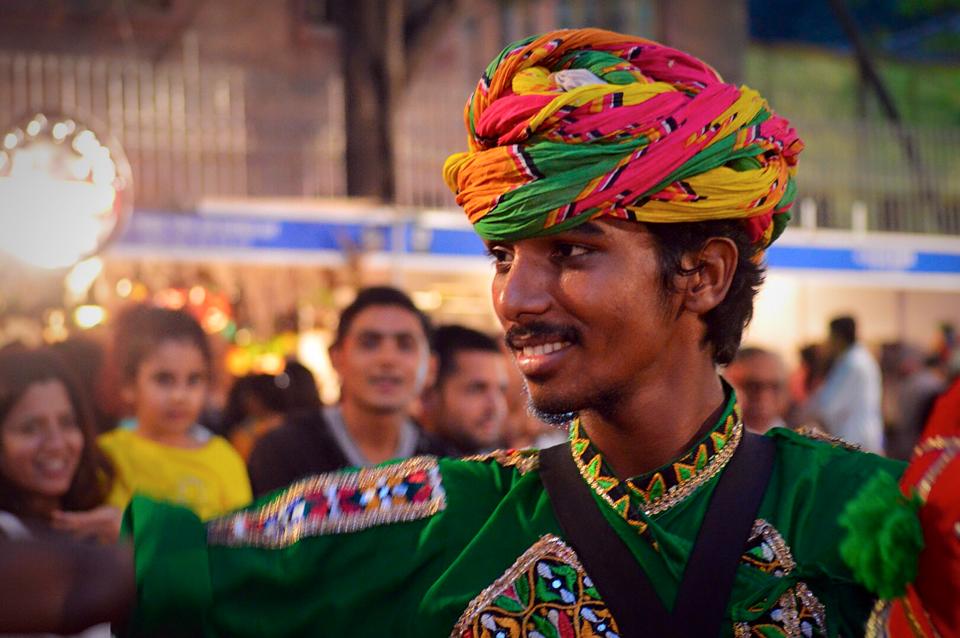
Don’t categorize me… Photo credit: Chaitanya Chapekar, QGraphy
Thus both States, by omission (absence of Hindu marriage registration) or commission (presence of 377), have fomented such an unreasonable classification and targeted homosexuals (in India) or Hindus (in Pakistan) as a class, by dragging their feet and hiding behind the fig leaf of social opprobrium in denying them their rights. The Delhi High Court judgement explained that public animus or disgust towards a particular social group or a vulnerable minority cannot be held as grounds for such a classification. Article 15 of the Indian Constitution forbids discrimination based on certain characteristics, including sex. In the case of Pakistani Hindu marriage registration, this classification may be argued to be a relatively clear case of religion-based discrimination. But in the case of 377, the unreasonable classification is slightly more nuanced: the Court held that the word “sex” includes not only biological sex but also sexual orientation, and therefore discrimination on the ground of sexual orientation is not permissible under Article 15.
Social Problems
The inability to prove the marital relationship is a fount of myriad problems for married Pakistani Hindus. The ‘Statements of Objects and Reasons’, attached to the Hindu marriage draft bill, states that: “A large section of the Hindu community, particularly women, does not have basic documentation to prove their marital status or identity. They are also deprived of legal rights such as inheritance, remarriage, separation, adoption of children and annulment of marriage. This legislation will institutionalize marriage and marriage-related legal rights thereof. This act is applicable to every person who is Hindu by his or her religion in any of its forms”. Significantly, the Hindu Marriage Bill will thus enable both ‘jati‘ and scheduled caste married Pakistani Hindu women a legal escape from domestic violence, abuse or exploitation, thereby circumventing in one stroke, the problems arising from treating Hindus as a monolithic whole, and placing the resolution of problems of scheduled caste Hindus in the hands of upper castes, who may have more traction and rapport with the state machinery. Before such a law, it would be understandable that any Hindu woman would be reluctant to report matters like domestic violence to the police. In the absence of legal recognition, they are merely co-habiting with a man, needlessly obfuscating the issue, increasing red tape, providing scope for corruption and ultimately denial of legal remedy. Among a host of other aspects, the marriage bill will also make adoption easy, especially for homeless Hindu children and childless Hindu married couples in Pakistan. Inability to furnish marriage proof causes, in case of a Hindu husband’s demise, the wife and children of the deceased to be unable to prove their relationship for succession and also a multitude of problems for inheritance. Widows face difficulties in claiming pensions. The transfer or succession of movable and immovable properties is harder, causing Hindu women to be denied any share in their husband’s property.
Similarly, in the presence of Section 377, Indian gays, lesbians, bisexuals and transgenders face violence, blackmail, extortion and other abuse, but are afraid to file a report at the police station for fear of revelation of their alternate sexuality, and thereby, their criminal status. Just as in the case of married Hindu women who are averse to their codified relationships being seen as a behaviour (cohabitation), LGBTIQ persons are distressed by their identities being defined by the sexual act, which is just a behaviour and not an integral whole to define a person.
Though convictions are extremely rare, Human Rights Watch has argued that the law has been used to harass HIV/AIDS prevention efforts, sex workers, homosexuals and other groups at risk of the disease. The People’s Union For Civil Liberties has published two reports of the rights violations faced by sexual minorities in general, and, in particular, transsexuals in India. Indian homosexuals do not face difficulties like Pakistani married Hindus in obtaining passports or CNIC-like documents (the landmark NALSA judgement of the Indian Supreme Court opened the gates to full equal transgender rights in India including access to gender-appropriate passports), however domestic partners face the same difficulties in adoption, inheritance, transfer of property, protection from domestic violence, and unlike the heterosexually married couple where the family is supportive, here the partner may be even denied hospital visitation rights. Again, as in the case of Hindu Pakistani women, this leaves Indian queers vulnerable to corruption, invasion of privacy and misuse of powers by the police.
Additionally, the decriminalization of same-sex love is also hoped to produce a variety of allied positive outcomes in the community: increased self-acceptance, confidence, protection from bullying in schools through awareness, fighting discrimination, reducing the incidence of self-abuse, substance dependency and suicide among LGBTIQ teens. Similarly, the registration of marriages is expected to produce a variety of positive outcomes for the Pakistani Hindu community.
Opposition
Fear of a backlash from religious hardliners has stymied progress in both cases. In India, as far as the legal battle against Section 377 is concerned, prominent religious leaders have called homosexuality, among a host of other things: unnatural, a bad addiction, a regression, animal-like, a crime, a transgression of human relations and against Indian culture, nature, science and scriptures.
The fear of religious opposition has resulted in a ominous condition in the Hindu Marriage Act which the community is opposing tooth and nail. It is Clause 12 (iii), which says that the marriage will be annulled if any of the (Hindu) spouses converts to another religion. The patron-in-chief of the Pakistan Hindu Council, and PML-N member of National Assembly, Dr. Ramesh Kumar Vankwani, has pointed out,“There are fears the clause would be misused for forced conversions of married women the same way young girls are being subjected to forced conversions.” There is no mention of whether an individual who forcibly converts a Hindu girl will be eligible for appropriate punishment or not, which could help in mitigating the quotidian threat of abduction faced by Pakistani Hindu women. The clause was inserted by the Council of Islamic Ideology when the Bill was sent for Sharia vetting in 2015. Standing Committee Chairman Chaudhry Mahmood Bashir Virk expressed regret over the long-drawn tactical delay in framing family law for the Hindu community. No mention is made about whether this conversion would be voluntary or not. India’s Special Marriages Act allows spouses of different religions to be married. Thus on the positive side, a law that has become a bulwark against religious and caste-based suppression of freedom of choice for heterosexuals, promises to play the same role for sexual minorities too. And on the negative side, presently a law that targets those very sexual minorities is dragging a number of straight people in its vicious, puritanical undertow. The (constitutional) moral of the story: Hindu or Muslim, gay or straight, we are all in the struggle against extra-constitutional oppression together.
The Indian LGBTIQ community has been arguing for decades that a lack of recognition and equal status for same-sex relationships has led to forced heterosexual marriages of queers, to spouses oblivious of the alternate sexual orientation of their partner, often leading to double lives, deceit, and a lot of emotional trauma. In a gender unequal society like India, this hypocrisy has affected women acutely, because divorce leaves them with much social stigma. Both the Indian LGBTIQ and the Pakistani Hindu community have been fighting conservative efforts to stymie their existence and curtail social diversity.
Conditions for Recognition
The first two conditions of the Hindu Marriage Bill 2016 are strikingly similar to the motive behind the demand for reading down Section 377 in India: keeping consensual, adult sex in private outside the ambit of Governmental interference, and to have separate gender-neutral laws against rape, and for child protection. India’s legal system seems to view marriage or sex only through a procreative lens. The 2 conditions are: parties to the marriage be of 18 years of age or above, and that parties to marriage to be able to give consent. Just like activists supporting the Hindu Marriage Bill, LGBTIQ activists calling for the reading down of Section 377 want to enshrine the rights of consenting adults. Both groups of reformists want to protect children – whether by preventing child marriages (Hindu Marriage Bill) or by having separate robust laws against child sexual abuse (reading-down Section 377).
There are many more similarities and differences in these two struggles. The underlying thread appears to be the hankering of a tenacious minority to full and equal citizenship. Pooja Rajput wrote in The Express Tribune after the bill was passed that, today, “she is not a Hindu living in Pakistan but a Pakistani Hindu”. Similarly, sexuality and gender minorities do not merely happen to be living in India, but be respected Indian LGBTIQs.
- “Those Left Behind Things” – an ode to queer refugees - February 1, 2019
- Twilight, The Day Before - September 5, 2018
- “बुज़ुर्ग हैं, क्षीण नहीं” – “सीनेजर्स” वयस्क सम/उभय/अ लैंगिक पुरुषों का प्रेरणादायक संगठन - January 22, 2018

